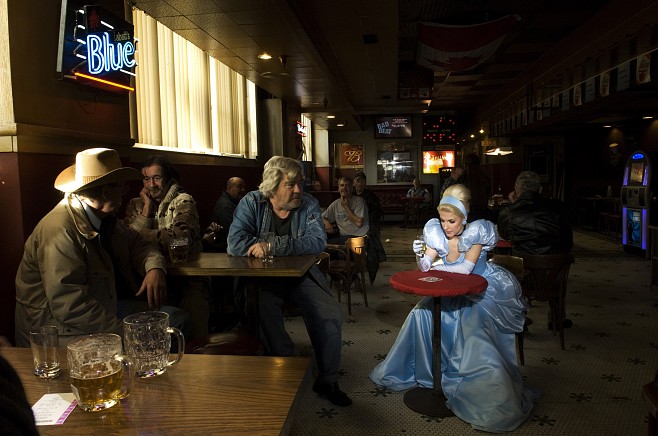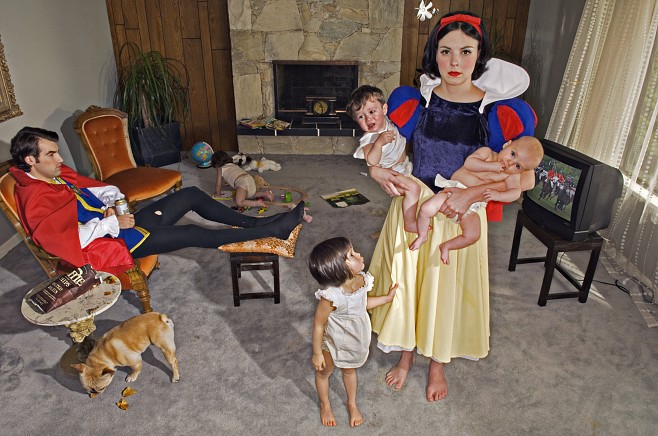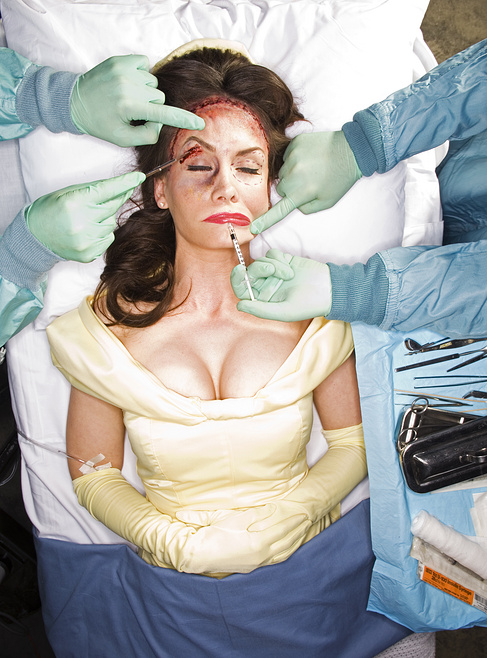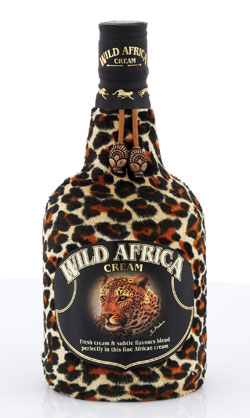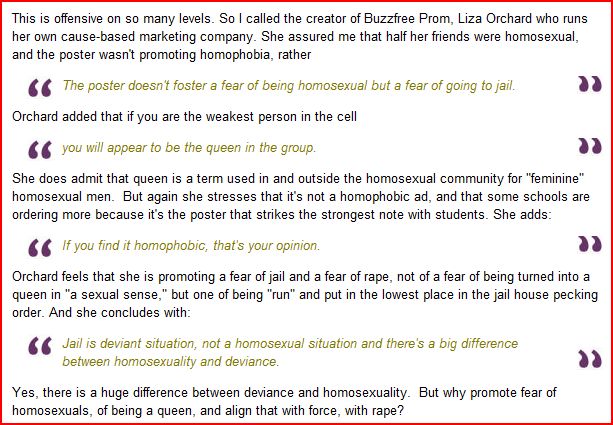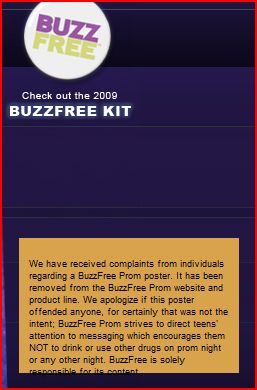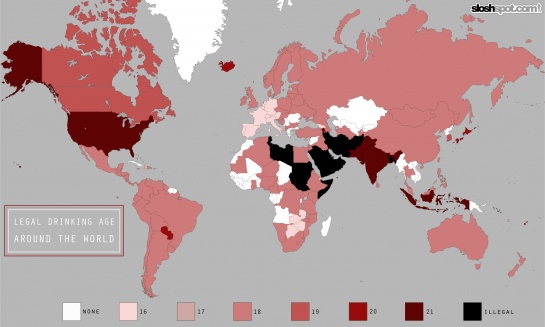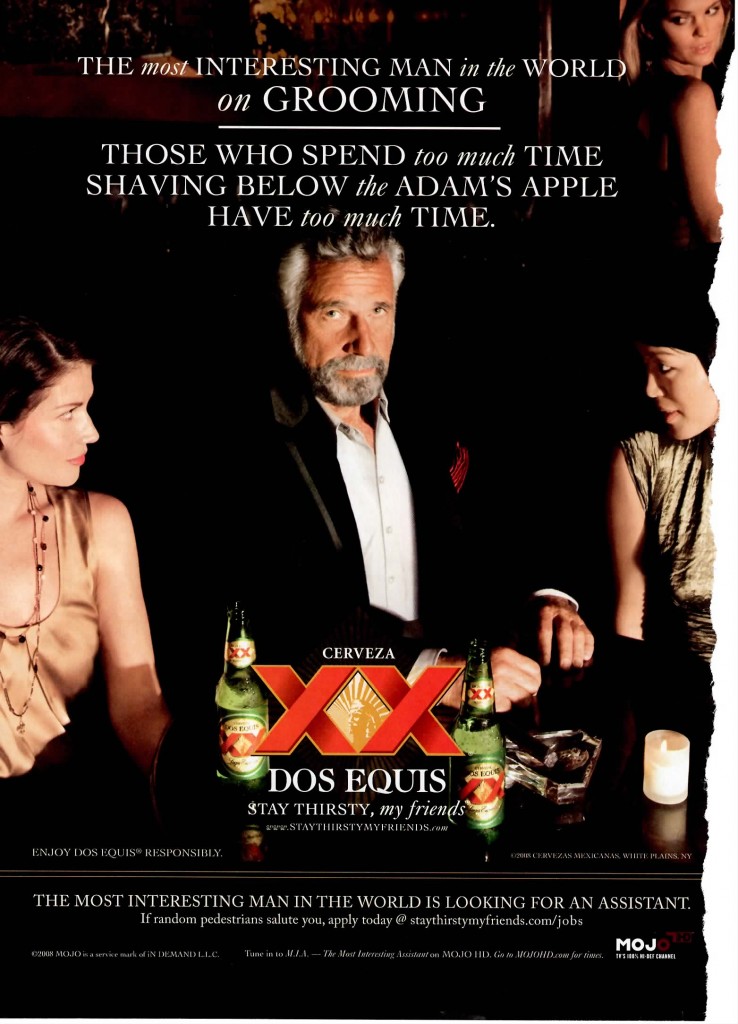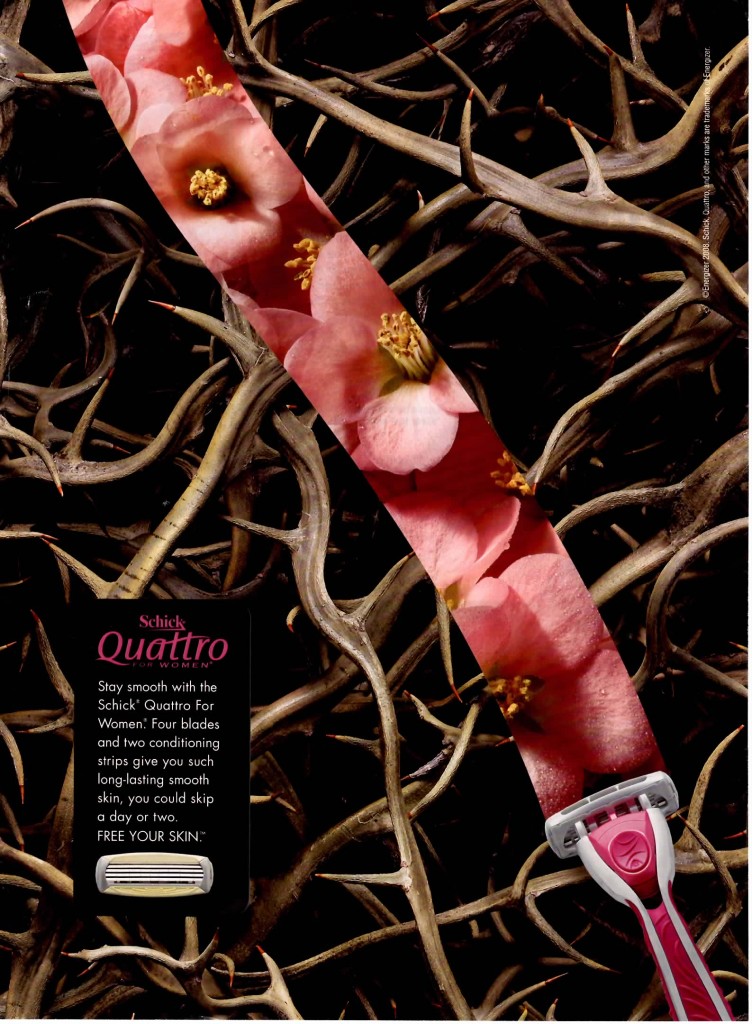We’re written before about how the male gaze shapes how “sexy” is marketed and sold. Specifically, when sex is used to sell, we usually see (presumably straight) men’s sexual subjectivity and the sexual objectification of women. That is, we are all encouraged to see with a straight male gaze and thus, we are presented with a female object of desire. Three choice posts on the topic can be found here, here, and here.
While in New Orleans (again) in July, I attended some of the festivities associated with Tale of the Cocktail. One of them was a cocktail expo with the theme “Seven Deadly Sins.” Sponsored by Cabana Cachaca rum, Lust was personified this way:
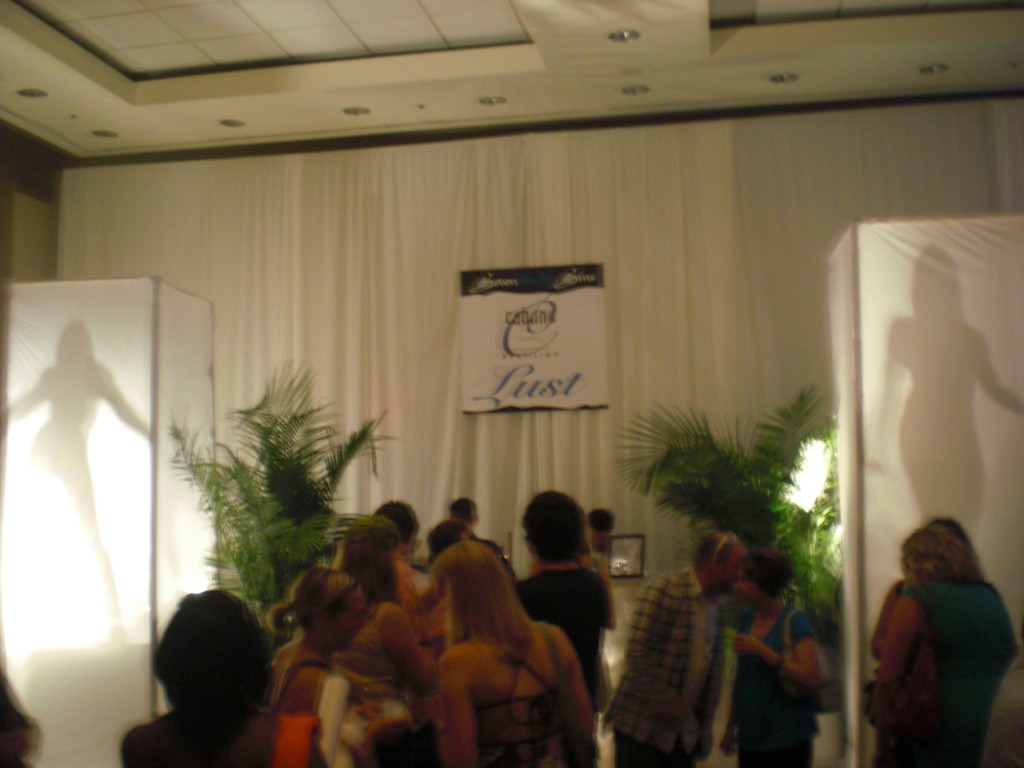
Presumably lust is not a feeling exclusive to straight men, yet the Lust booth featured only women dancing. Because of the primacy of the male gaze, what is believed to be sexy to straight men gets defined as “sexy” for everyone. The print ad they had displayed features a woman from the waist down, naked:
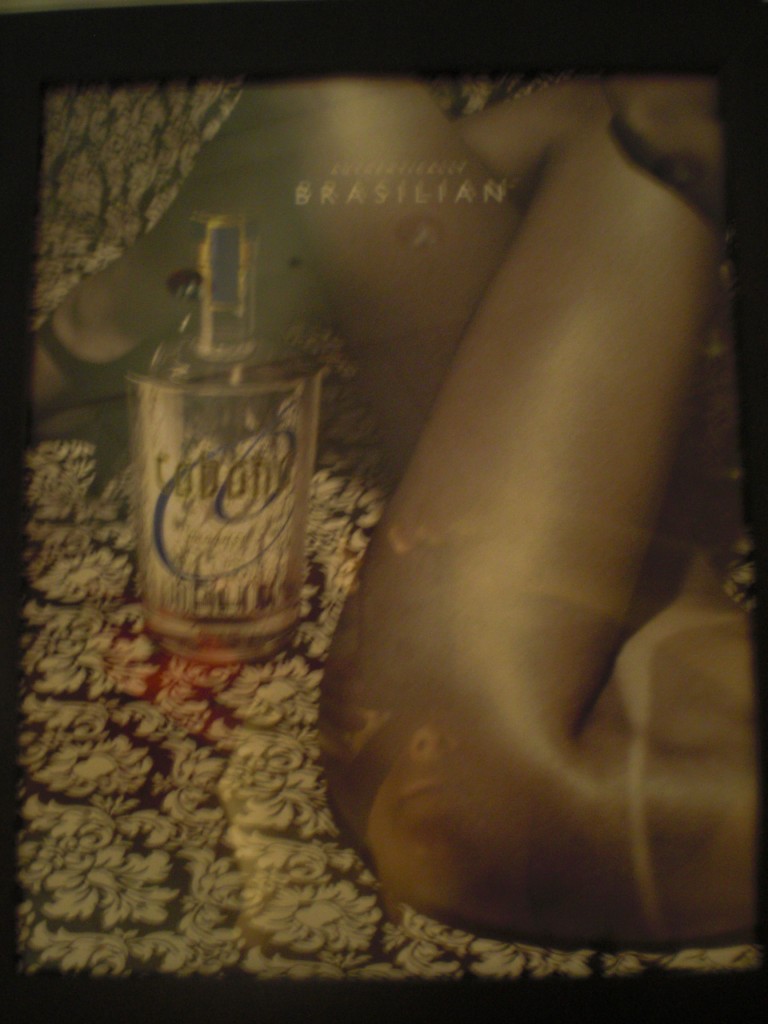
Thought Experiment: If nearly naked men had been dancing in those columns, do you think the audience would have thought “hot men for the women!” or “how gay!”? I think many, if not most, would have thought “how gay!” A female gaze that validates women’s sexual subjectivity and the sexual objectification of men is simply less accessible for both women and men. I think if men were dancing in the columns, an objectifying male gaze would still be at play, except this time the gaze would have been aimed at men.
Gay men are often stereotyped as obsessed with fashion, physical fitness, and their overall appearance (i.e., feminine). The idea that both gay men and women are subject to the male gaze explains a lot about why.
NEW! Amanda C. sent in this ad for a sex party in Chicago. Like the instance above, “sex” is represented by a woman. Amanda writes:
If a man’s legs were portrayed, would that mean that the party isn’t “sexy” or that it’s about gay sex? Just another example of how the heterosexual male gaze is universalized.

—————————
Lisa Wade is a professor of sociology at Occidental College. You can follow her on Twitter and Facebook.

